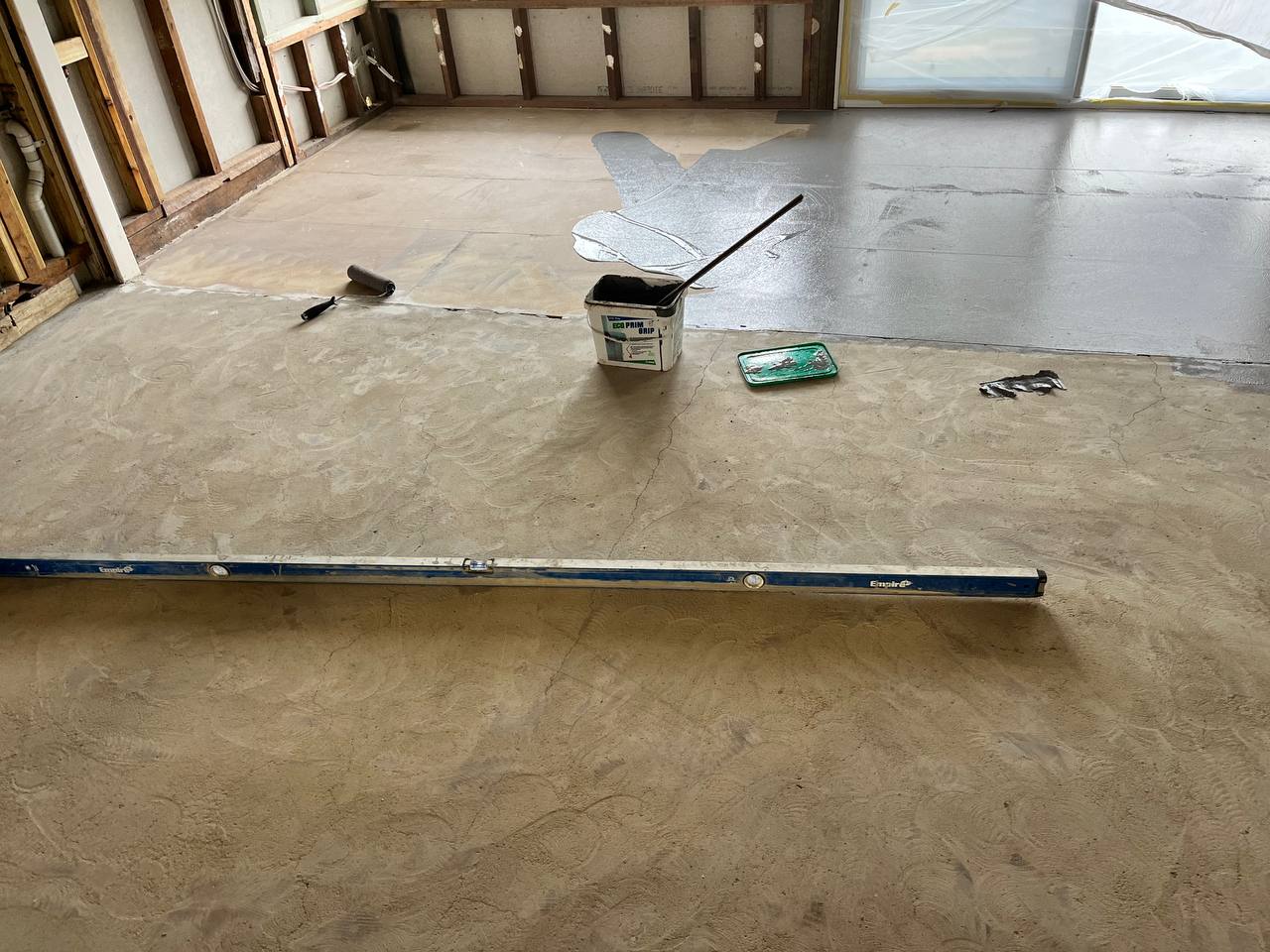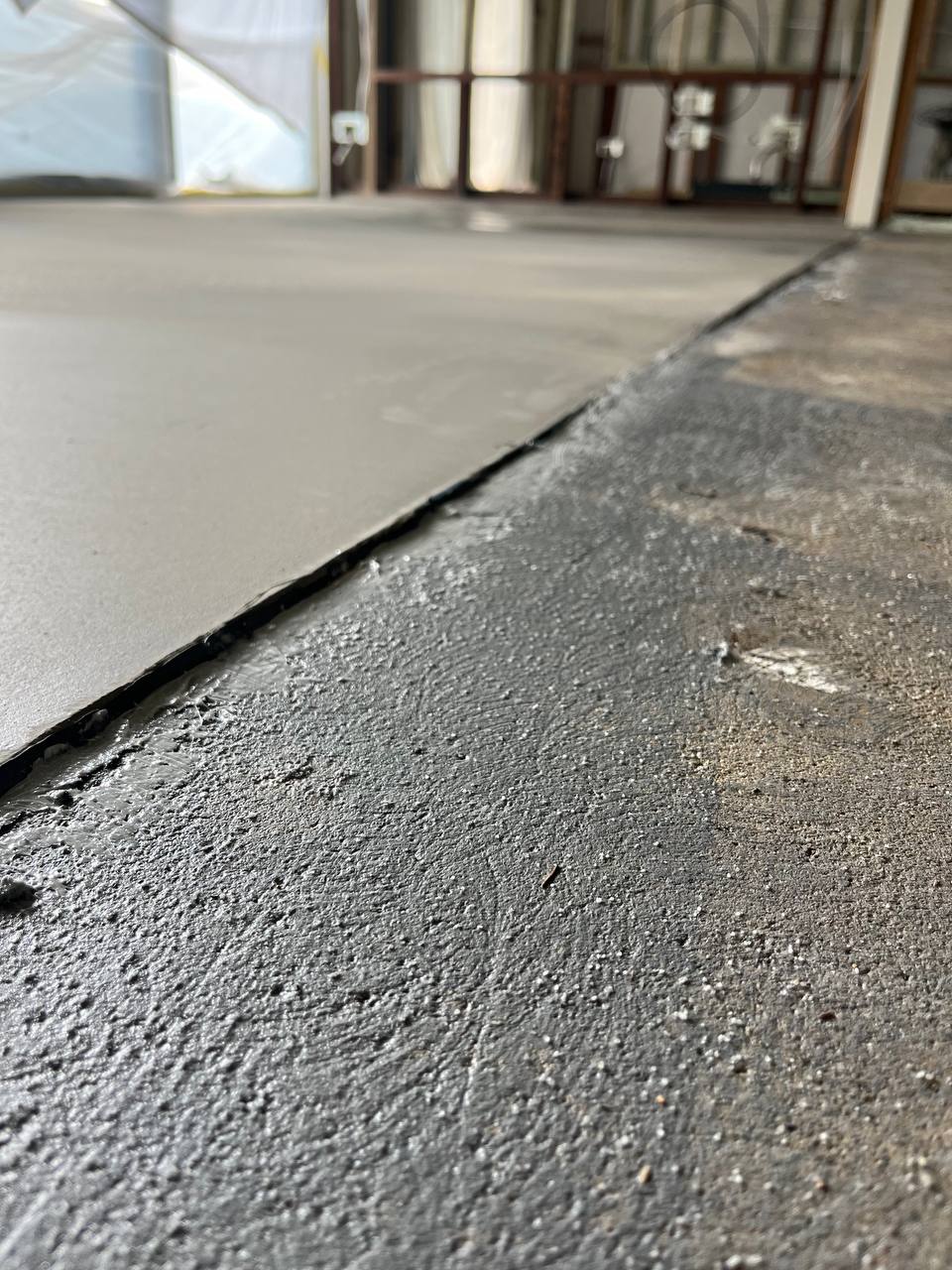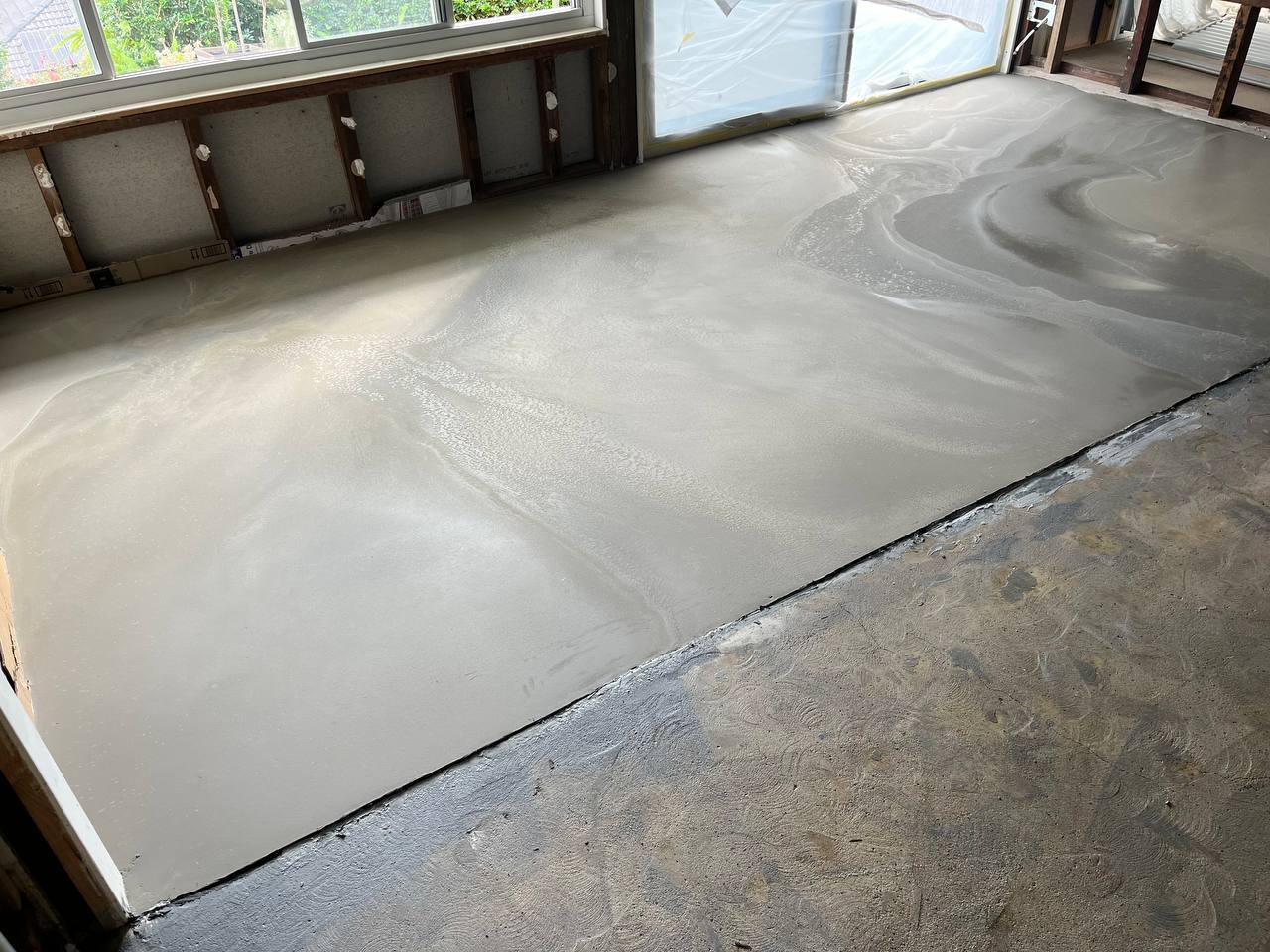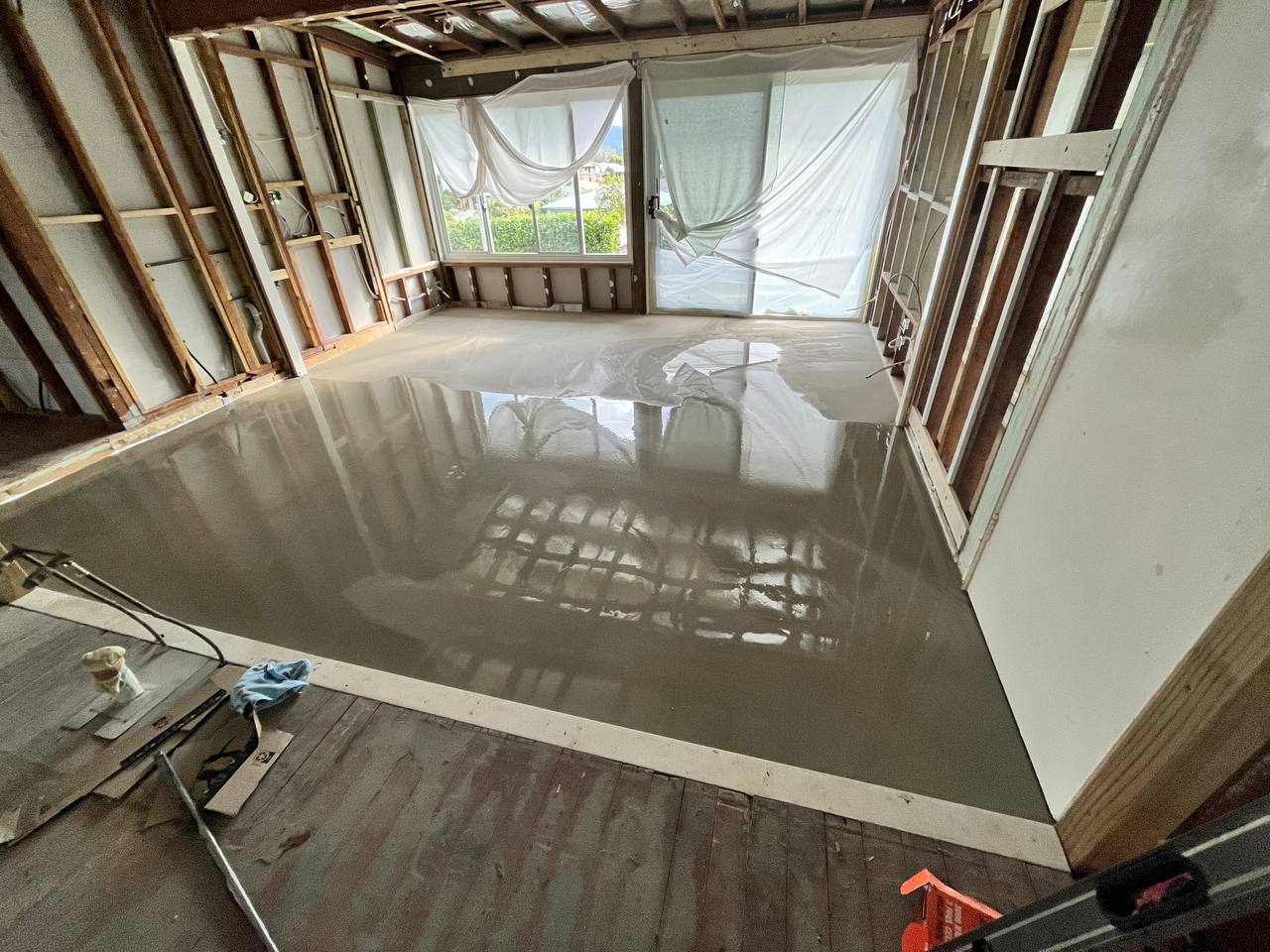When it comes to floor leveling, no two jobs are ever the same. Each project brings its own set of challenges and requires a unique approach to ensure a perfectly flat and even surface. Recently, we completed a floor leveling job that highlighted just how varied these tasks can be. The project involved leveling a subfloor that was a combination of two very different structures: one half was a rough concrete slab, while the other half was a particle timber subfloor with a significant dip of about 40mm in one corner.
The Challenge
The main challenge was to level these two different surfaces within the customer’s budget constraints. The timber subfloor needed special attention due to its uneven nature, while the concrete slab, although rough, required a different approach to achieve a smooth finish. The customer’s clear instruction was to create a straight and level floor, ready for a new floor covering installation. This meant we had to use two different self-leveling compounds, each suited to the specific subfloor type.
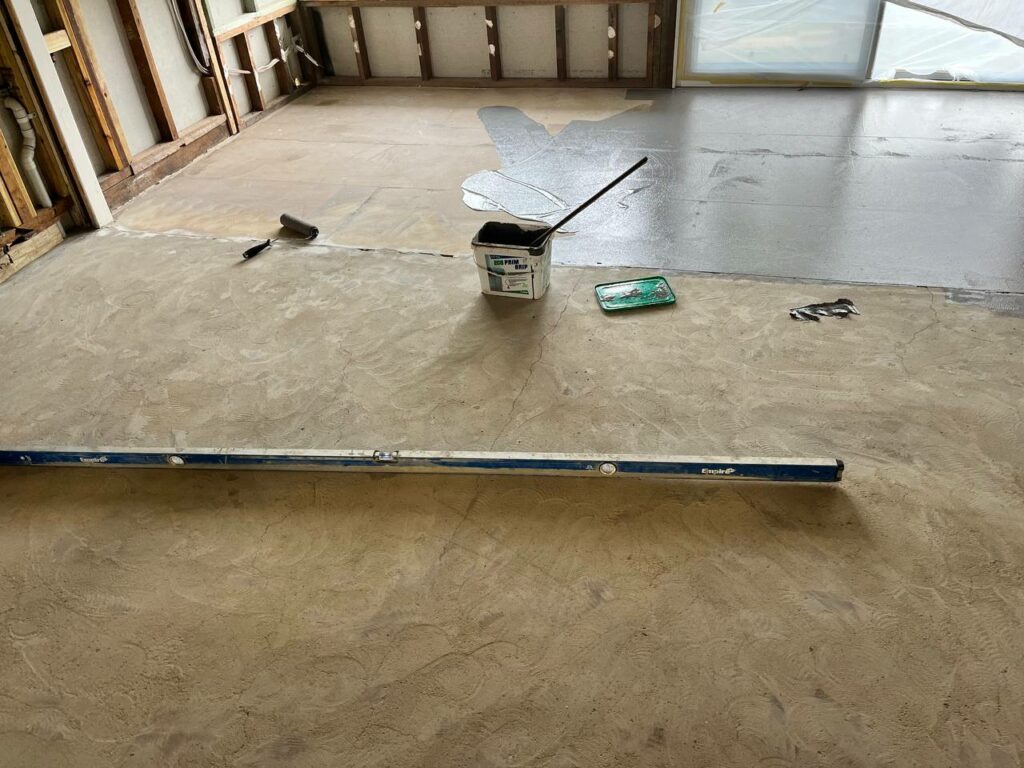
The Solution
For the timber subfloor, we selected Mapei Ultraplan Renovation, a self-leveling compound designed specifically for timber surfaces. This product is ideal for filling and leveling dips, ensuring a stable and even base. For the concrete slab, we opted for Mapei Ultraplan Eco, a high-performance self-leveler known for its excellent bonding properties and smooth finish.
Step-by-Step Process
Preparation: The first step was to thoroughly clean both subfloor areas, removing any debris, dust, and loose particles. Proper preparation is crucial for ensuring the self-leveling compounds adhere correctly and perform as expected. To avoid possible mistakes with the self-leveling compounds, we used two different primers: one designed for the timber subflooring and the other for the concrete slab. This ensured optimal adhesion and performance of the self-levelers.
Leveling the Timber Subfloor: We started by applying the Mapei Renovation self-leveler to the timber subfloor. This involved mixing the compound to the correct consistency and carefully pouring it over the surface, spreading it evenly to cover the entire area. Special attention was given to the corner with the 40mm dip, gradually building up layers to achieve a level finish. We allowed this section to dry completely before moving on to the next step.
Transitioning to the Concrete Slab: Once the timber subfloor was leveled and dry, we moved on to the concrete slab. We applied a primer to ensure proper adhesion of the Mapei Eco self-leveler. After the primer dried, we mixed and poured the Mapei Eco compound, spreading it across the concrete surface to create a smooth and even finish. Care was taken to blend the two sections where the timber and concrete subfloors met, ensuring a seamless transition.
The Outcome
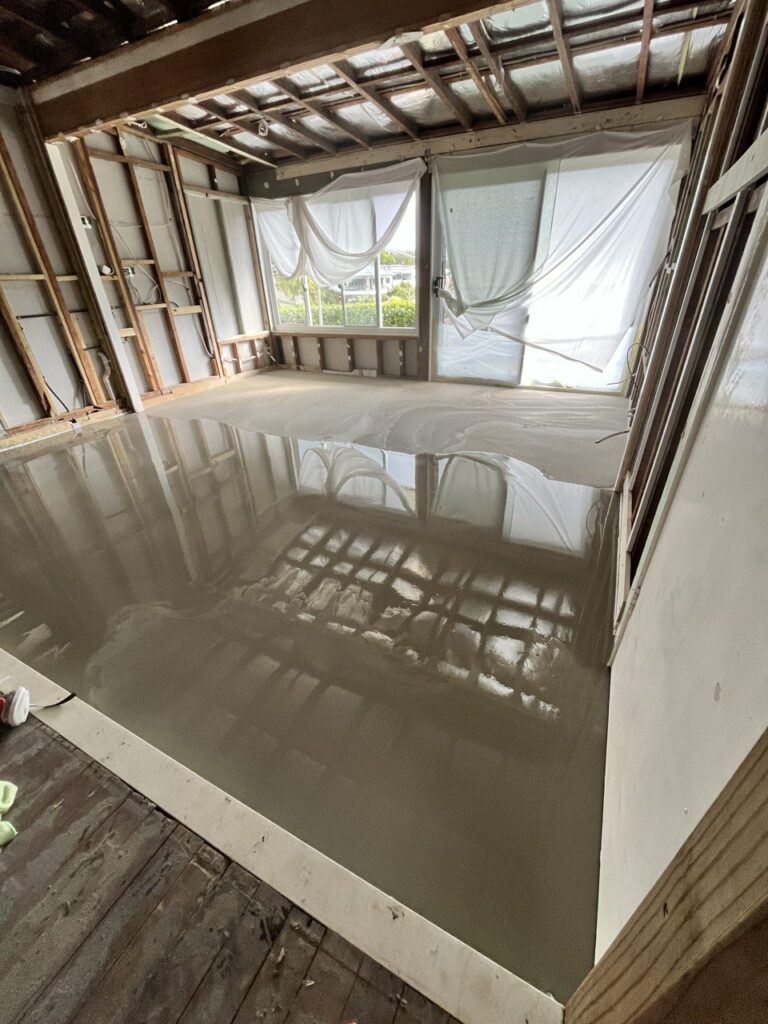
The job was completed successfully, with the floor now perfectly level and ready for the new floor covering. Although the aesthetic appearance of the leveling might not be ideal due to the two different compounds used, the main goal was achieved: a flat and even surface. The customer was pleased with the result, appreciating our attention to detail and the cost-effective solution we provided.
Key Takeaways
Customization is Key: Each floor leveling job is unique and requires a tailored approach. Understanding the specific needs of the subfloor types and selecting the appropriate materials is crucial for a successful outcome.
Proper Preparation: Thorough cleaning and preparation of the subfloor surfaces are essential steps that should never be skipped. This ensures the self-leveling compounds adhere correctly and perform as expected.
Attention to Detail: Carefully transitioning between different subfloor types and ensuring a seamless finish is vital for achieving a professional result. Patience and precision in application can make a significant difference.
Communication with the Customer: Keeping the customer informed throughout the process and understanding their budget constraints can help in selecting the most appropriate and cost-effective solutions.
To Sum Up
In conclusion, not every floor leveling job is the same. Each project presents its own set of challenges and requires a customized approach. By carefully selecting the right materials and paying attention to detail, we can achieve excellent results, even under budget constraints. This recent job is a testament to the importance of adapting to the specific needs of each project to deliver a level and smooth floor, ready for its new covering.
As a result, another happy customer left a five-star review for our service.

